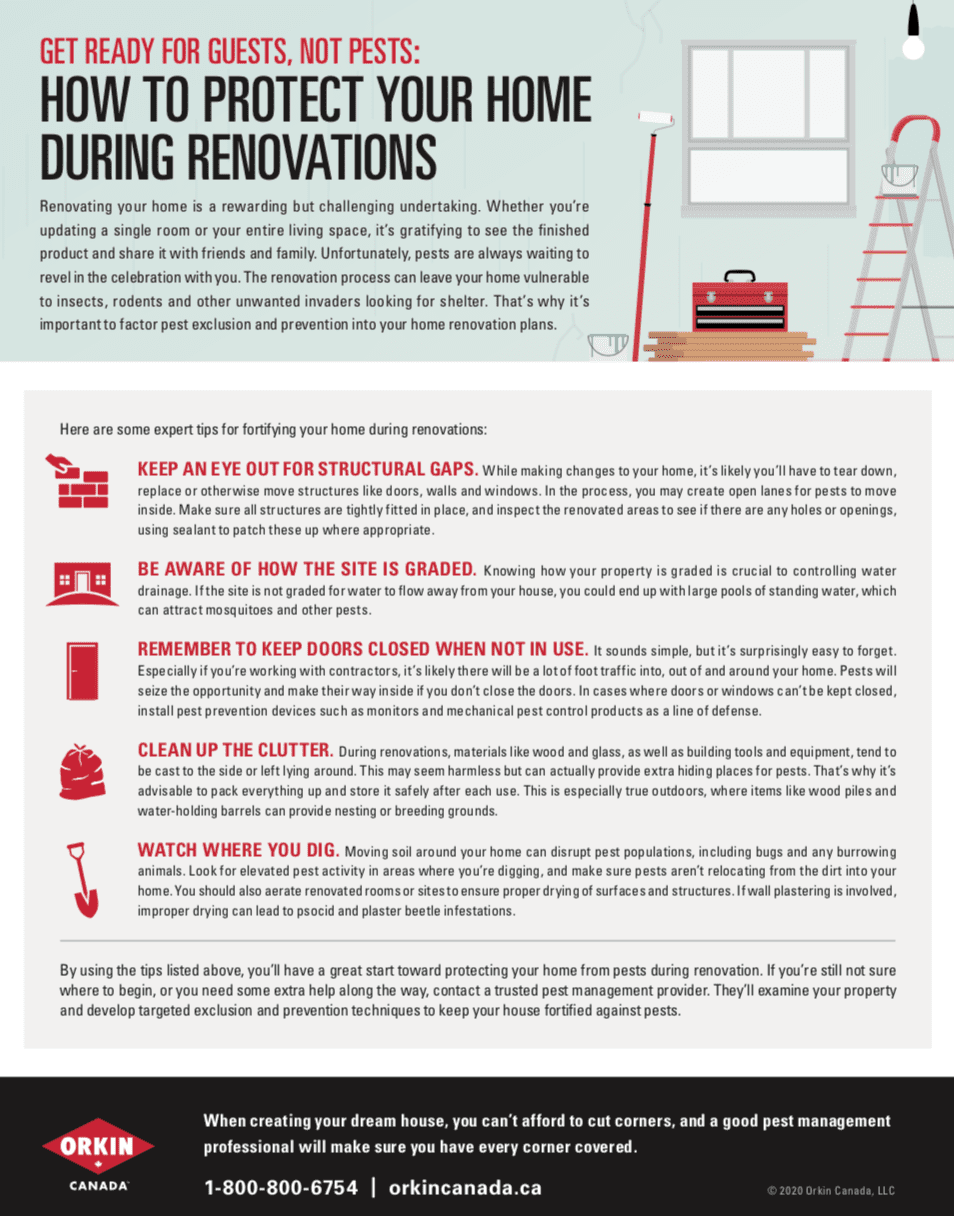Renovating your home is a rewarding but challenging undertaking. Whether you’re updating a single room or your entire living space, it’s gratifying to see the finished product and share it with friends and family. Unfortunately, pests are always waiting to revel in the celebration with you. The renovation process can leave your home vulnerable to insects, rodents and other unwanted invaders looking for shelter. That’s why it’s important to factor pest exclusion and prevention into your home renovation plans.
Here are some expert tips for fortifying your home during renovations:
Keep An Eye Out For Structural Gaps
While making changes to your home, it’s likely you’ll have to tear down, replace or otherwise move structures like doors, walls and windows. In the process, you may create open lanes for pests to move inside. Make sure all structures are tightly fitted in place, and inspect the renovated areas to see if there are any holes or openings, using sealant to patch these up where appropriate.
Be Aware Of How The Site Is Graded
Knowing how your property is graded is crucial to controlling water drainage. If the site is not graded for water to flow away from your house, you could end up with large pools of standing water, which can attract mosquitoes and other pests.
Remember To Keep Doors Closed When Not In Use
It sounds simple, but it’s surprisingly easy to forget. Especially if you’re working with contractors, it’s likely there will be a lot of foot traffic into, out of and around your home. Pests will seize the opportunity and make their way inside if you don’t close the doors. In cases where doors or windows can’t be kept closed, install pest prevention devices such as monitors and mechanical pest control products as a line of defense.
Clean Up The Clutter
During renovations, materials like wood and glass, as well as building tools and equipment, tend to be cast to the side or left lying around. This may seem harmless but can actually provide extra hiding places for pests. That’s why it’s advisable to pack everything up and store it safely after each use. This is especially true outdoors, where items like wood piles and water-holding barrels can provide nesting or breeding grounds.
Watch Where You Dig
Moving soil around your home can disrupt pest populations, including bugs and any burrowing animals. Look for elevated pest activity in areas where you’re digging, and make sure pests aren’t relocating from the dirt into your home. You should also aerate renovated rooms or sites to ensure proper drying of surfaces and structures. If wall plastering is involved, improper drying can lead to psocid and plaster beetle infestations.
By using the tips listed above, you’ll have a great start toward protecting your home from pests during renovation. If you’re still not sure where to begin, or you need some extra help along the way, contact a trusted pest management provider. They’ll examine your property and develop targeted exclusion and prevention techniques to keep your house fortified against pests.
Need a quick reference guide for all of this? You can also download our expert tip sheet here.

You may also like
Canada's Top 25 Bed Bug Cities Of 2023
Bed bugs are extremely efficient hitch hikers. They can move easily across a room and climb onto luggage or anything left on a bed in just one night. Learn which cities have made Canada’s top 25 bed buggiest cities.
British Columbia's Top 20 'Rattiest' Cities 2023
As winter approaches, pest control leader Orkin Canada reminds homeowners and business owners to take precautions to help keep rodents out. Cities are ranked by the number of rodent (rat & mice) treatments the company performed from August 1, 2021 through July 31, 2022.
Ontario's Top 25 "Rattiest" Cities 2023
Pest control leader Orkin Canada reminds home owners and business owners to take precautions to help keep rodents out. Cities are ranked by the number of rodent (rat & mice) treatments the company performed from August 1, 2022 through July 31, 2023. This ranking includes both residential and commercial treatments.
Eastern Canada's Top 15 'Rattiest' Cities 2023
As winter approaches, pest control leader Orkin Canada reminds homeowners and business owners to take precautions to help keep rodents out. Cities are ranked by the number of rodent (rat & mice) treatments the company performed from August 1, 2021 through July 31, 2022.
Remove pests from your home, and stop them from coming back
We work hard to listen, understand and assess your unique situation. Request a free, no-obligation estimate today for a customized pest program that fits your needs.
Request a Free Home EstimateRequest a Free Business Consultation


